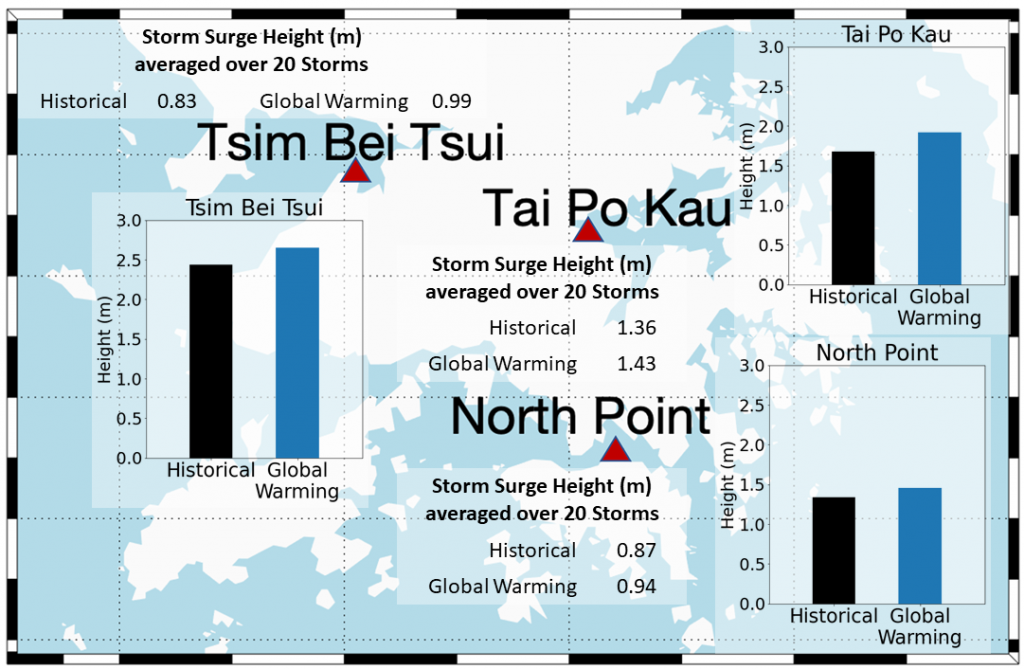Coastal South China including Hong Kong suffer significant economic, societal and human losses due to tropical cyclones (TC) each year. As global warming intensifies, we expect it will affect future typhoons and thus storm surge at land-falling. Collaborating with the Hong Kong Observatory, the research team investigated the future changes of western North Pacific land-falling TCs and their impacts due to climate change. The team estimated that by the end of 21st century, TC mean landfall (peak) intensity will increase by 2 m/s (10 %). Over the Hong Kong waters, averaged TC-induced storm tide will increase by ~1 m. Moreover, for the southeast to east Asian coast as a whole, storms of the typhoon class or above will sustain 4.9 h longer and penetrate 92.4 km farther inland. According to the results, the government can plan their future policies in order to cope with the flooding problem caused by TC-induced storm surges, as well as the costal defence project in order to protect Hong Kong coastlines.


Uniqueness and Competitive Advantages:
- Through high resolution computational simulations, we can resolve the terrain, coastlines and also the TCs’ structure more accurately
- We can compare the simulation results with real historical weather data


